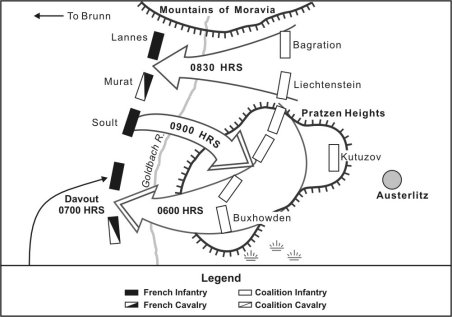Visualising Napoleon’s Strategies:
Napoleon Bonaparte, a name that resonates with military genius and political acumen, was a French statesman and military leader who rose to prominence during the French Revolution. His strategies were a blend of tactical brilliance, innovative thinking, and an understanding of the human psyche.
Napoleon’s strategies were often characterised by speed, surprise, and concentration of force. He was known for his ability to rapidly move his armies across vast distances, often catching his enemies off guard. This was made possible through his innovative use of the ‘corps’ system, where each corps was a self-sufficient entity capable of independent action. This allowed Napoleon to manoeuvre his forces with great flexibility and speed.

Napoleon’s Greatest Battles and Successes:
1. Battle of Austerlitz (1805): Often referred to as the ‘Battle of the Three Emperors’, this battle is considered Napoleon’s greatest victory. He cleverly deceived the Austro-Russian forces into thinking he was in a weak position, only to launch a devastating counter-attack that led to a decisive French victory.
2. Battle of Jena-Auerstedt (1806): In this battle against Prussia, Napoleon demonstrated his mastery of the ‘divide and conquer’ strategy. He split his forces into two and defeated the Prussian army in two separate battles on the same day.
3. Siege of Toulon (1793): This was one of Napoleon’s earliest successes where he ousted the British naval forces from the port city of Toulon during the French Revolution.
Visualising Napoleon’s Actions That Lead to Defeats:
Despite his many successes, Napoleon also suffered significant defeats which were often due to overconfidence, underestimating his enemies or logistical difficulties.
1. Battle of Waterloo (1815): This was Napoleon’s final battle where he was defeated by an Anglo-Allied army led by the Duke of Wellington. Napoleon’s strategy was to divide the enemy forces and defeat them separately. However, his plan failed due to a combination of poor weather, strong opposition, and late arrival of his reinforcements.
2. Invasion of Russia (1812): This campaign was a disaster for Napoleon. His Grand Army was not prepared for the harsh Russian winter and suffered heavy losses due to cold, starvation, and Russian attacks.
3. Peninsular War (1808-1814): This was a prolonged military conflict where Napoleon’s forces were bogged down in Spain and Portugal. The guerrilla warfare tactics used by the Spanish and Portuguese forces, coupled with British intervention, led to a costly defeat for Napoleon.
Conclusions and Learning Points:
Napoleon Bonaparte was undoubtedly one of the greatest military strategists in history. His innovative tactics revolutionised warfare and his political reforms had a lasting impact on France. However, his downfall serves as a reminder that overconfidence, underestimating one’s enemies, and neglecting logistical considerations can lead to disaster.
From Napoleon’s strategies, we can learn the importance of flexibility, speed, deception, and concentration of force in achieving military success. However, it is equally important to understand the limitations of one’s resources and capabilities, respect one’s enemies, and adapt to changing circumstances.
In conclusion, while Napoleon’s strategies led him to many victories and successes, they also contributed to his defeats. His story serves as a valuable lesson in strategic thinking, leadership, and decision-making.
